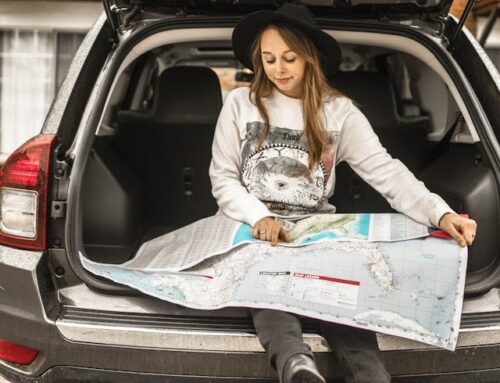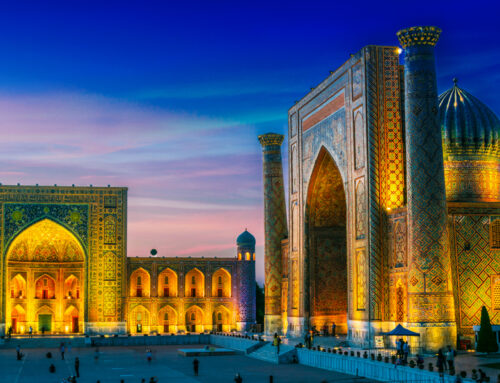Guide to Tuscany Fishing Holidays in Maremma, Italy
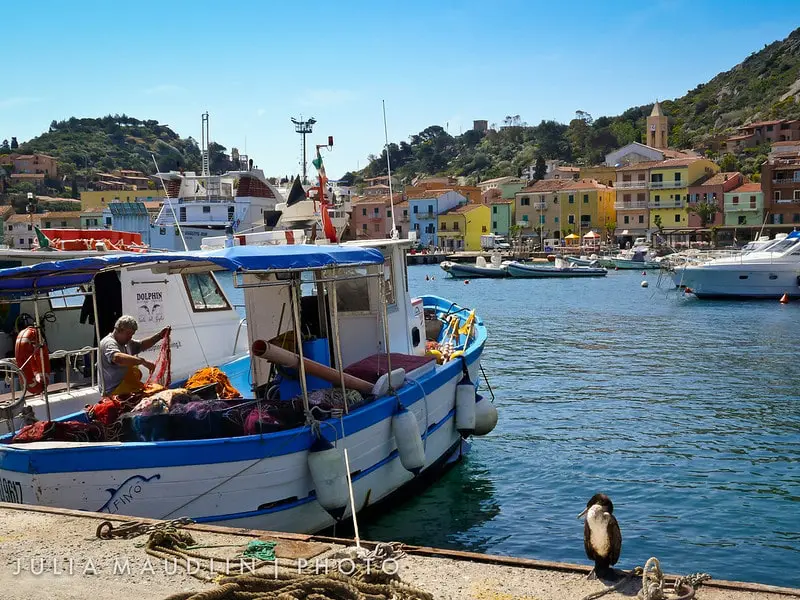
Visit Maremma Italy and Have a Great Fishing Trip

Flickr by: Julia Maudlin
With crystal clear water, long beaches, mountains, hills, lakes, and natural thermal areas, Maremma is one of the most diverse and rich territories you can imagine. It is a vast area in Tuscany with stunning sceneries that extends between the provinces of Livorno and Grosseto. Maremma is not only rich in beauty, but also in regional products. The food here reflects the richness of the territory: ingredients from the sea, hills, and mountains blend perfectly in the dishes of this area.
Maremma is also truly a fisherman’s paradise, so be sure to bring your rod with you. Here you’ll find three mountain rivers: the Vivo, Lente, and Albegna, but there are also beautiful lakes and the Argentario Sea. In this article, we’ll tell you everything you need to know to plan a trip to Maremma: which places to see, where to stay and how to organize a Tuscany fishing trip you will not soon forget.
Maremma Natural Park
For those who love nature, Maremma is a true paradise. Its territory extends for an area of 40 thousand hectares. One of its most famous spots in the Maremma Natural Park, a natural reserve that includes a pinewood of 600 hectares, mountains, and 20 km of coast.
There are different routes you can choose to visit the park: each has a different duration and challenges. You can do it on your own or with the help of a guide. Inside the park, it’s also possible to ride a bike, a horse or do other activities such as canoeing.
The park is open all year round, every day of the week, with the exception of December 25th. Before entering, you have to purchase entrance tickets at the Visitor Center. According to the time of the year, it may be mandatory to go with a guide. Normally this happens from 15 June to 15 September, due to the fire danger.
If you plan to go on your own outside these months, you can find a map of the different trails at the Visitor Center. Bring with you comfortable shoes, plenty of water, a k-way, a hat and mosquito lotion, which can be really useful.
Most of the park is occupied by the UccellinaMountains. Its highest altitudes are Poggio Lecci, with 417 meters above sea level. In the northern part, the land is mostly flat and occupied by wetlands. You’ll also find sandy beaches, bays, and cliffs for a total of 25 km between the locality of Talamone and Principina a Mare.
The beaches inside Maremma Natural Park
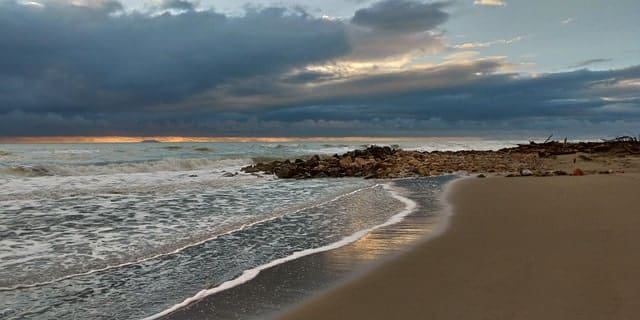
Inside the park, there are three beaches: Marina di Alberese is the easiest one to reach and offers a glimpse of pristine nature, fine sand, and crystal-clear sea. Marina di Alberese is the best-known beach in the Park and is also the most easily accessible. The entrance is the same as the park, but if you come by car remember that a very limited number of vehicles are allowed to enter. Therefore, it is best to leave your car in the parking area and reach the beach through the free shuttle service. The beach can also be reached by bicycle through a cycle lane that starts from the visitor center and is 8 km long.
Collelungo beach is the natural continuation of Marina di Alberese and, finally, you’ll find Cala di Forno, which is only accessible with a guide. To reach this one, you’ll need to walk for about an hour in an incredible and unspoiled landscape, and if you’re lucky you may even spot foxes or deers!
Fishing in Maremma Park
The waters along the Maremma coast offer rich fishing environments. Each day the local fishermen go out on the water and then take their catch to restaurants and shops in the area and beyond.
However, if you want to fish inside the park you’ll need a special permit. The park’s official website is not updated, but according to it, fishing licenses for the Ombrone river are issued by the Visitor center in Alberese, whose address is via del Bersagliere 7/9. The center is open every day from 8,30 to 4pm and the price of the license is 5 euro. Fishing without a license is forbidden and you risk being fined.
Fishing in the Ombrone river is allowed from April 1st until October 31stevery year on Wednesdays, Saturdays, and Sundays. Each day a maximum of 80 people are allowed to fish in the river. Each angler can use a maximum of two rods and the distance between the two can be no more than 5 meters. The amount of fish you can catch cannot exceed 3 kg.
Tuscany’s “poor fish”
What type of fish can you find in Tuscany? This area is known for its “poor fish” which, despite the name, is very rich in omega 3 and is extremely healthy. The Italian pescepovero (literally “poor fish”) is a group of fish that includes anchovies, horse mackerel, musky octopus, mullet, and saber fish.
Tuscany’s Tyrrhenian and Ligurian Seas are home to incredibly diverse species: Bluefin tuna, barracuda, swordfish, seabass and grouper are often caught here at different times during the year.
Where to stay to visit the Natural Park?
The Park’s website includes recommended hotels and facilities (agritourism, B&B, restaurants, and other tourist activities). You’ll find a map with plenty of options to choose from. All of them are placed alongside the park and comply with the laws in terms of environmental respect.
All the selected facilities, in fact, must demonstrate to adhere to certain standards, such as the correct management of waste and water, the use of sustainable energies and the promotion of typical food and of useful information about the Park and its routes.
Some of the most virtuous facilities have been awarded as “Environmental Excellence”. Those are shown in the map with a flower symbol. If you’re planning a visit to the Park, it’s best to stay in one of those, as guests will have a discount of 30% on all Maremma Park itineraries.
What to eat in Maremma
The Southern Tuscany dishes are linked to the country life and use herbs, local meat, and blue-tailed fish as main ingredients. This area in Italy is famous for its traditional peasant recipes, that use simple seasonal ingredients and are still very present on family tables and in restaurant menus. Maremma’s food is known to be easy and quick to make and to taste heavenly.
The simplicity of the food makes some of the very best dishes in Italy. Maremma’s specialty foods include pappardelle al cinghiale (pasta with wild boar sauce), Acquacotta soup (literally “cooked water”), smoked eel, cheeses, hams, and of course, Tuscany famous wine.
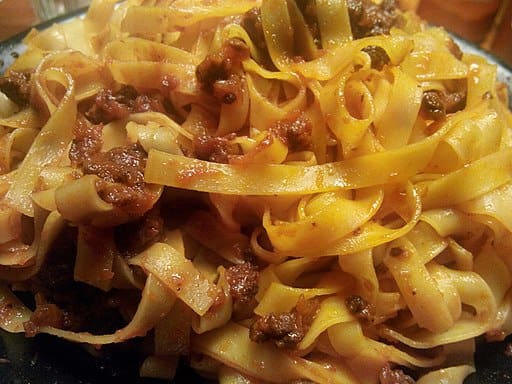
Wikimedia Commons by: Catia Giaccherini
Finally, remember to save some space for dessert: you’ll get plenty of treats in this area, such as cantuccini – almond cookies that have a long tradition and are a favorite of every Italian grandmother.
Tarot Garden
The Tarot Garden (Il GiardinodeiTarocchi in Italian) is a spectacular sculpture garden located in Maremma. It was created by the French artist Niki de Saint Phalle, who was inspired by Antoni Gaudì’s Park Güell in Barcelona and by the Monster Park in Bomarzo, Italy. The sculptures inside the garden are based on the Tarot and you can admire 22 of them. The figures are monumental (12/15 meters high), and the visitors can walk through them as well.
The artist herself lived in one of the sculptures, the Empress, during the construction of the garden. The huge figures are made of steel covered with glass, mirrors, and colored ceramics.
It took seventeen years to complete the Tarot Garden and this is nowadays one of the must-see attractions if you go to Maremma, especially if you travel with kids. The Park is the perfect fusion of art and nature and the huge statues are rich in colors and fascination.
What you’ll see inside
Even if you don’t know anything about Tarot, you’ll surely enjoy a trip here. However, the artist took deep inspiration from the cards, so it’s best to know at least something. The sculptures are inspired by 22 Major Arcana, representing animals, mythological figures, or humans. They’re the trump cards of a tarot pack (made of 78 cards) and in the past centuries, they were part of a special card deck used for gaming and gambling.
Each Major Arcanum depicts a scene, mostly featuring an individual or several people, with many symbolic elements. They are considered to be the cards with the most esoteric significance.
The artist gave her personal interpretation of the cards, which is strongly tied with her life and experiences. Therefore, they don’t just have an aesthetic purpose, but each figure has a deep significance.
One of the most important statues is certainly the Empress, which has the form of a sphynx and a large womb welcoming the visitors. Inside, the walls are covered by sparkling mirror glass and the interiors host a bedroom and a kitchen. On the Empress’ back, there’s a roof terrace from which you can relax and have a beautiful view of the Mediterranean.
In addition to the 22 figures, there are some more statues hidden inside the park (such as the Cat or the Prophet), which you can discover during your visit. On the official website, there’s an interactive map that you can use to learn more about the sculpture in the park and the concept that inspired the artist.
Tarot Garden: how to plan a visit
The best (and only!) way to reach the Tarot Garden is by car. In fact, there’s no bus connecting it to the nearest train station, which is in the town of Capalbio. The Garden’s official websites provide indications on how to reach the Park. If you’re going during lunchtime, remember that there are no restaurants inside, but you’ll find a café to have a quick snack. You can bring a packed lunch; however, it’s forbidden to picnic inside the park.
The garden is open from April 1st until October 15th, from Monday to Sunday, and from 14,30 to 19,30. The cost of the entrance ticket is 12 euro, but you can enter free of charge on fixed days: the entrance is free on the first Saturday of January, February, March, November, and December, from 9 to 13,00.
Spring is the best time to visit the Garden, while during summer it may be too hot. The Garden can be visited in one hour or two, if you want to take it easy (and take lots of pictures as well).
Seabass fishing in Orbetello Lagoon
If you are visiting Maremma and you love fishing, especially spin fishing, you can’t miss the Orbetello lagoon. This is a protected brackish water area where it’s not allowed to fish for commercial purposes and anglers must have a special permit. Because of the strict regulations, the lagoon environment is rich in fish and the sea bass is the main species.
If you want to fish sea bass, you must join a guided tour. In fact, it’s mandatory to contact the agency in charge for the release of sport fishing licenses in the lagoon () and book your fishing trip. They’ll rent you a boat where there’s room for 3-4 fishermen maximum and the boatman will bring you in the best spots for fishing sea bass. Catch and release is mandatory here to respect the fish.
Please note that there’s only one boat per day, and they do not leave every day, so you need to book well in advance and hope that on the selected date the weather will assist you.
The best fishing technique here, which will allow you to catch more fish and have more fun, involves the use of top water baits, especially the walking the dog (WTD) and poppers. Regarding your equipment, you can’t go wrong with a spinning rod of 7 ft maximum length with fast action, that will allow you to easily cast artificial lures up to 40 gr. Use a fast reel and a thin braided line to optimize the control of the top water bait and the casting distance. The more space you’ll be able to cover in front of you, the more chances you’ll have to catch fish.
For this type of fishing, it’s essential to see the bait clearly during the landing since in most cases the strikes are on sight. Therefore, a good pair of polarized sunglasses is a crucial tool that will make the difference: they’ll minimize the reverberation and allow you to always control your bait.
Conclusions
Those who practice sport fishing will love Maremma. This is the perfect place to relax and enjoy nature and the diversity of the scenery: with mountains, sea, lakes, and medieval towns, this area in Tuscany has something for everyone.
You’ll find a lot of things to do as well: hiking, biking, horseback riding or simply walking. Water sports are also popular, such as kitesurfing, windsurfing, or fishing. And when you’re tired of all of that wandering, you can simply relax at the thermal baths.
If you want to combine sport, relaxation, good food, and adventure, Maremma is definitely worth a visit.




